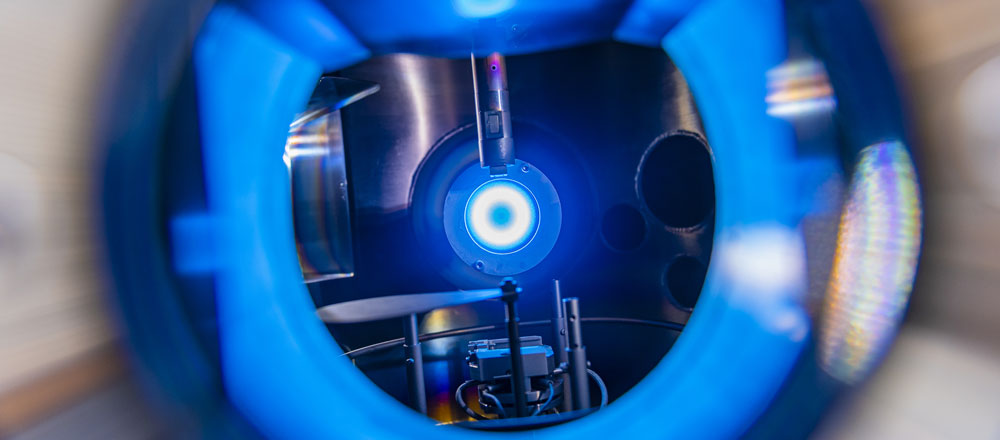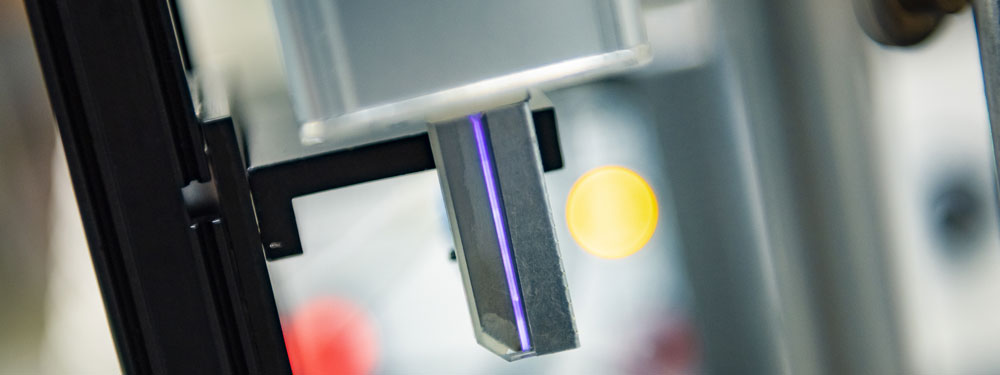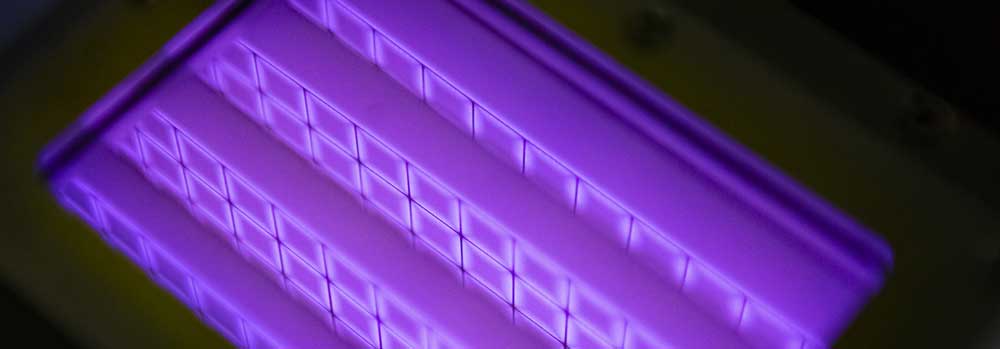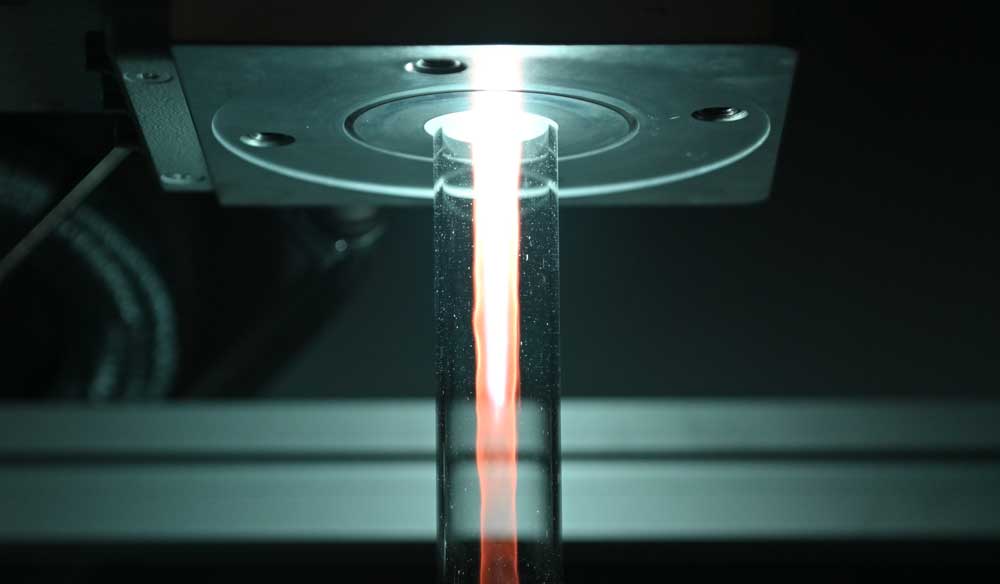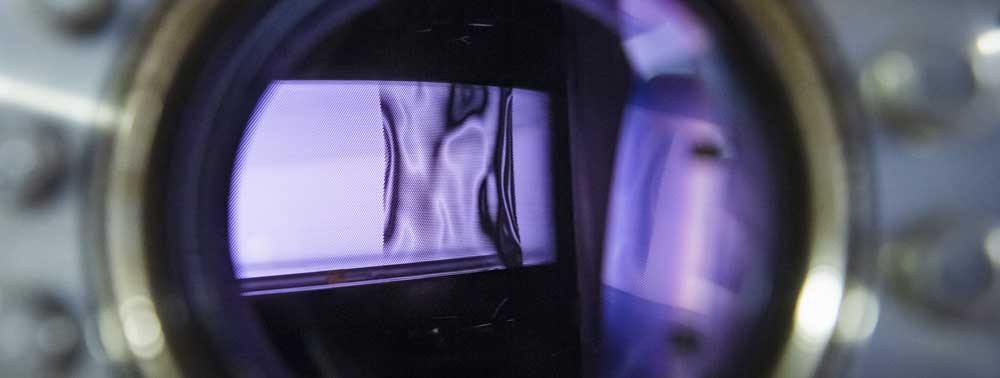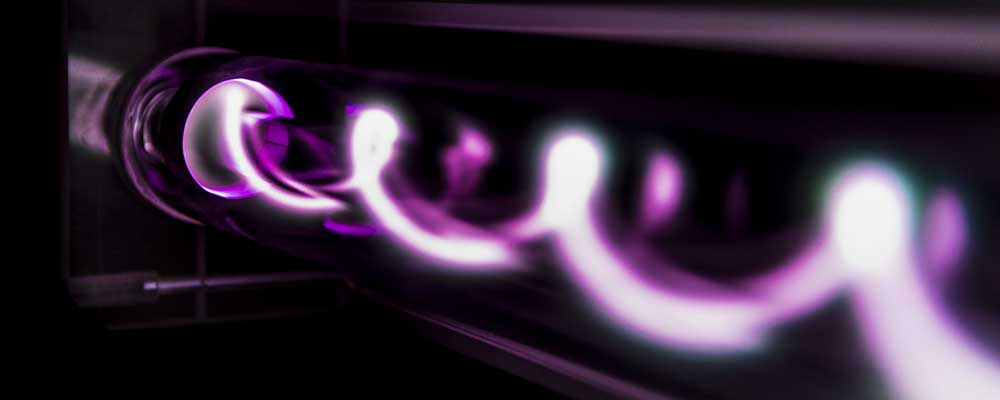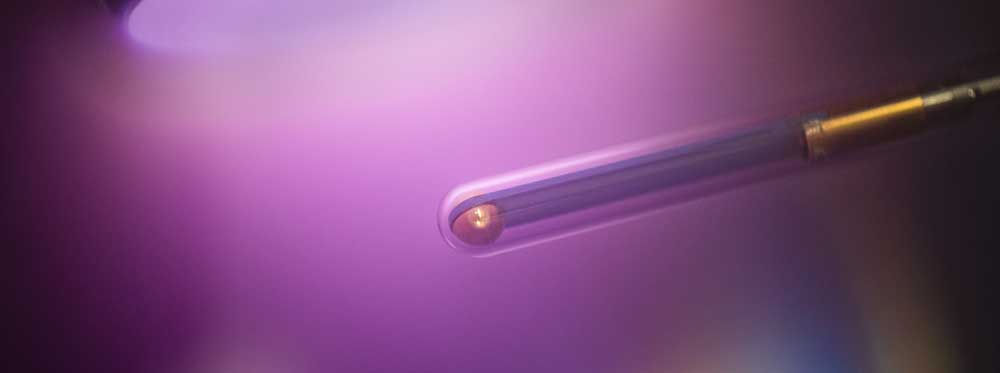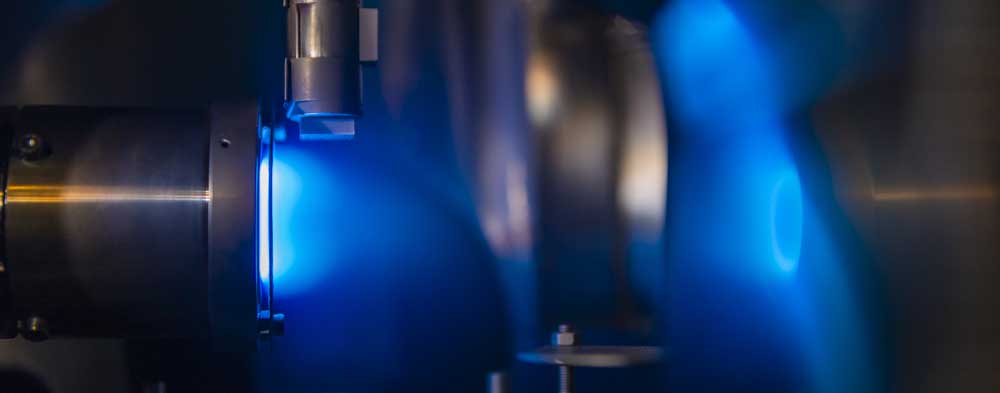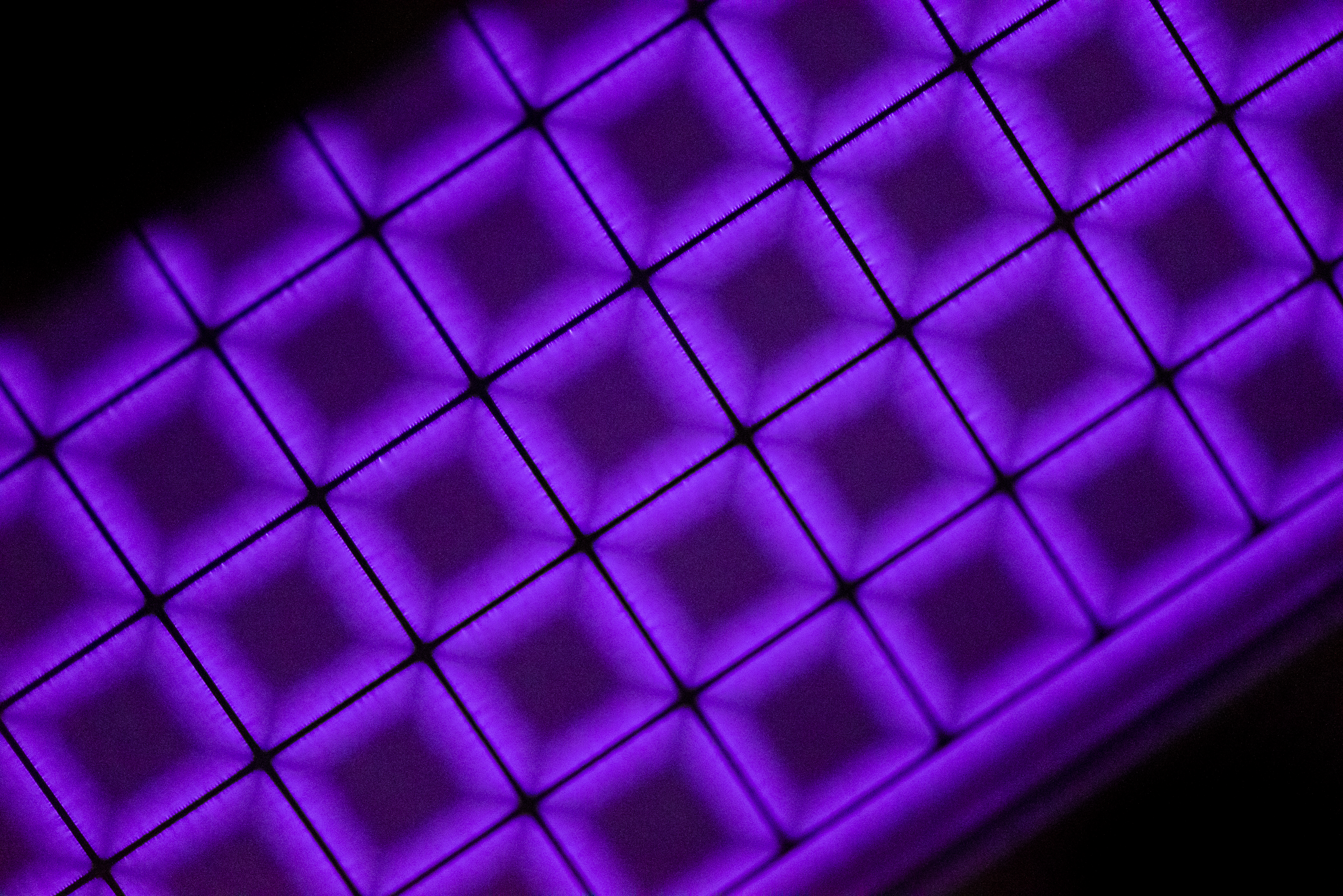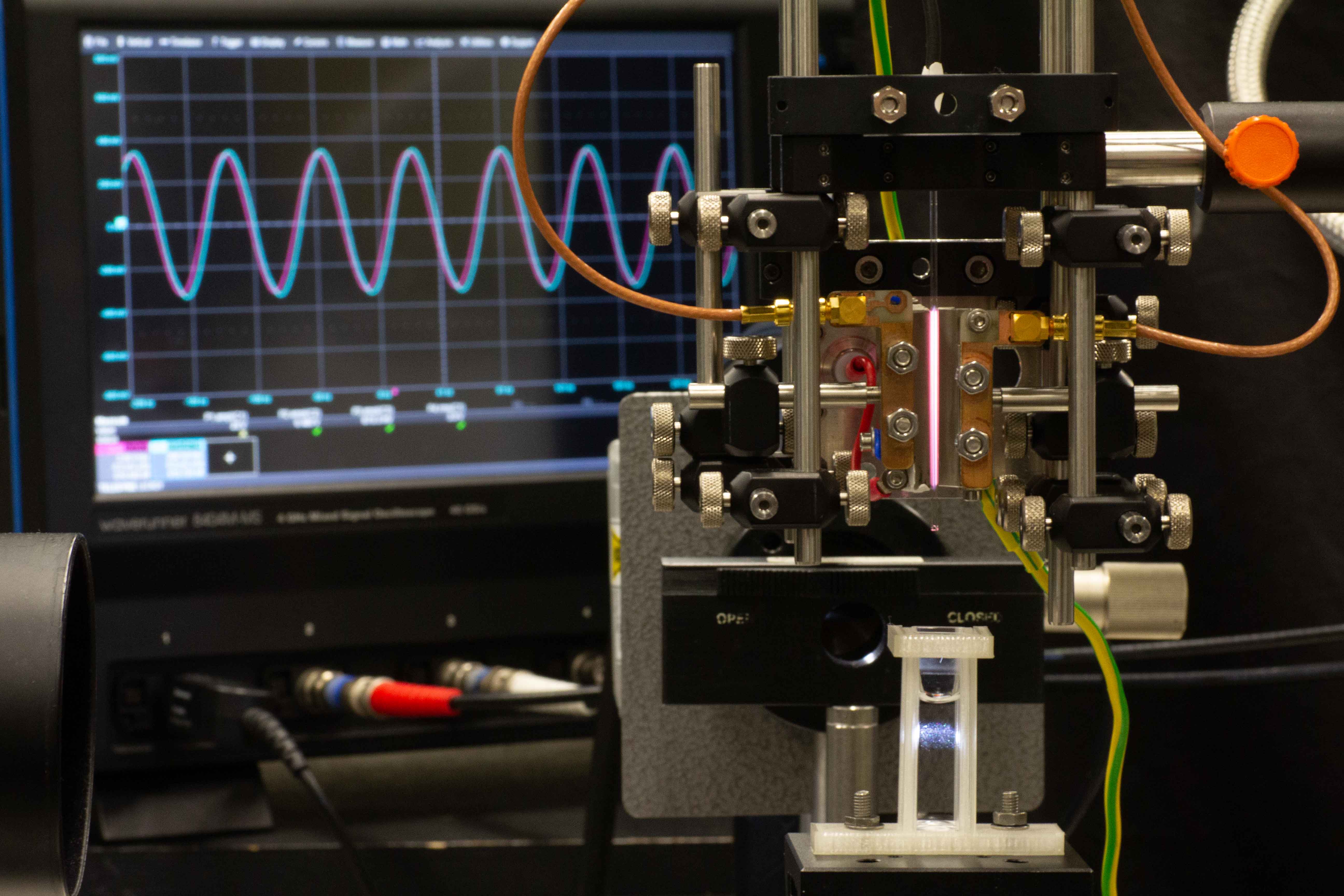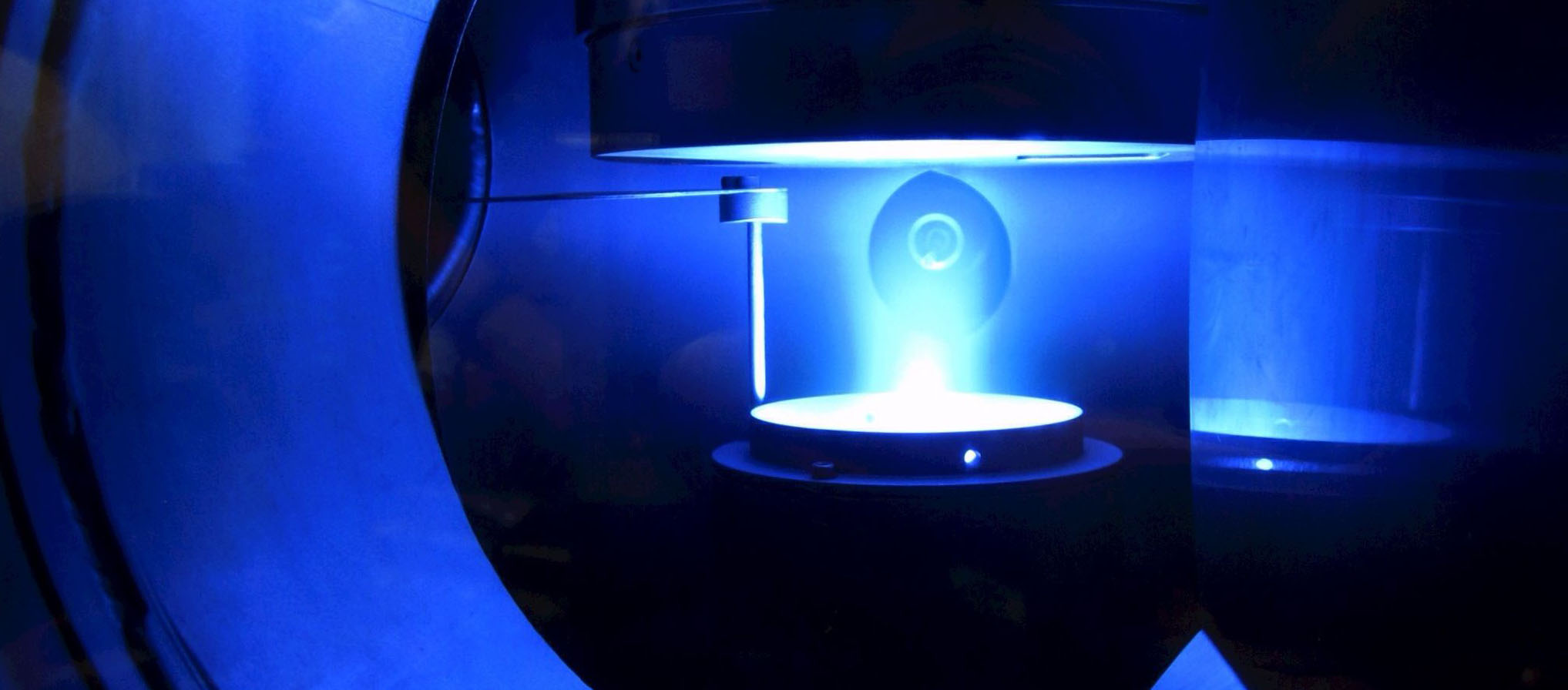- Details
Chemistry
PROF. DR. OLA NILSEN
In the context of the "Inorganic Chemistry Colloquium" Prof. Dr. Ola Nilsen from the Dept. of Chemistry of the University of Oslo Norway will talk about "Constructing complex oxides by ALD" on May 8, 2013 starting at 9:00 am (Core Lecture Hall NC 3/99).
Abstrac: The atomic layer deposition (ALD) technique can be used to construct thin films of numerous different types of binary oxides with surprisingly good quality. These oxides grow through self-limiting chemical reactions between the vapour phase and the available surfaces. When such binary processes are combined, several new effects may occur which may enhance or retard the processes since the surface chemistry is altered. The current talk will elaborate on experiences in deposition of multicomponent materials and show that what one first may believe is an obstacle, might be to your advantage.
- Details
H.E.S.S. Meeting 2013
22.04. - 26.04.2013 Event Center
Faculty of Physics and Astronomy
Institute for Theoretical Physics IV
http://www.mpi-hd.mpg.de/hfm/HESS/
- Details
24.04.2013 - PROF. JÖRG WINTER AN DER BILKENT UNIVERSITY, ANKARA
Vom 17. bis zum 20. April 2013 war Prof. Jörg Winter zu Gast bei Prof. Ömer Ilday am Ultrafast Optics & Lasers Laboratory der Bilkent University in Ankara, Türkei. Dort hielt er einen Vortrag über "Exploring the 4th State of Matter" und verlängertes das Kooperationsabkommen mit der Bilkent University.
- Details
KICK-OFF MEETING OF COST ACTION TD1208 “ELECTRICAL DISCHARGES WITH LIQUIDS FOR FUTURE APPLICATIONS”
Kick-off meeting of COST Action TD1208 “Electrical discharges with liquids for future applications”, has been held on Aril 11th, 2013 in Brussels. Plasmas generated in liquids and gas discharges interacting with liquids are today hot research. Plasma-liquid systems can produce strongly non-equilibrium environments and plasma-liquid interactions represent a great opportunity for developing novel chemistries and related technologies. This proposed Action aims bringing together a high level of experimental, simulation and theoretical expertise available around Europe and will support a coordinated effort that will improve our knowledge of basic processes responsible for initiating and sustaining discharges in/on liquids. Potential technological impact is foreseen in a range of application fields such as water and surface treatment, synthesis of nanoparticles, catalysis, formation of new organic compounds, and biochemistry. The chair of this action is Prof. Prof Frantisek Krcma from Brno University of Technology in Czech Republic and 23 countries are up to now the members of the Management Committee. Germany is represented by Jun.-Prof. Jan. Benedikt (Ruhr-Univeristy Bochum) and Dr. Stephan Reuter (INP, Greifswald).
- Details
09.04.2013 - QUANTITATIVE DETERMINATION OF OH RADICALS BY CAVITY RINGDOWN SPECTROSCOPY IN ATMOSPHERIC PRESSURE MICRO-PLASMAS FOR BIO-MEDICAL APPLICATIONS
From March the 24rd to April 6th, 2013, the PhD-students Simon Schneider and Daniel Schröder from project C1 and A1, as well as Jun.-Prof. Dr. Jan Benedikt, all members of the DFG Research Unit FOR1123, visited the group of Prof. RNDr. Jaroslav Vlcek at the University of West Bohemia, Plzen, CZ.
During this stay, absolute densities of OH radicals in the effluent of the micro-scaled atmospheric pressure plasma jet (µ-APPJ) have been measured in dependence of different concentrations of water impurities in the feed gas. This has been achieved by using a highly sensitive laser diagnostics called Cavity Ringdown Spectroscopy.
A common publication is in progress and a counter-visit is planned for next year.
- Details
EP2
PROF. DR. IGOR DENYSENKO
Professor Igor Denysenko of the School of Physics and Technology, V. N. Karazin Kharkiv National University, Ukraine, is a guest of Experimental Physik II from 2nd March to 15th April 2013. We continue our collaboration with Prof. Denysenko in the research field of dusty plasmas. Prof. Denysenko has developed a space-averaged global model to characterize the afterglow of pulsed argon plasmas which contain the large density of hydro-carbonaceous dust particles [1]. This global model is further developed in order to study the time evolution of the dust charge and the rate coefficient for electron collection by dust particles. During Prof. Denysenko’s stay in Bochum, we have prepared an article on this study. Furthermore, an article on a new non-invasive method for measurements of ion fluxes and ion densities in pulsed capacitively-coupled RF plasmas has been submitted. We kindly acknowledge the financial support of the Humbolt Foundation.
[1] I. Denysenko, I. Stefanovic, B. Sikimic, J. Winter, N.A. Azarenkov, and N. Sadeghi, J. Phys. D: Appl. Phys. 44 (2011) 205204
- Details
HERAEUS-SEMINAR "PLASMA AND RADIATION ENVIRONMENT IN ASTROSPHERES AND IMPLICATIONS FOR THE HABITABILITY OF EXTRASOLAR PLANETS"
The 527. Wilhelm und Else Heraeus-Seminar "Plasma and Radiation Environment in Astrospheres and Implications for the Habitability of Extrasolar Planets", took place from March 10th-15th, 2013 in the "Physikzentrum" of the German Physical Society (DPG) in Bad Honnef.
About 60 participants from 8 nations were discussing the conditions for habitability that are defined by the astrospheres, magnetospheres, and atmospheres surrounding extrasolar planets, including the question how signatures of life, so-called biomarkers, could be observed. The workshop brought together established experts on the various topics, young scientists as well as graduate students, and contributed to activities that will go well beyond the seminar week. The latter was supplemented by a Mini-Workshop within the framework of the ongoing collaboration between the Heliophysics group of the Ruhr-Universität Bochum, the Astroparticle Physics group at the University of Kiel, and the Centre for Space Research at the North-West University, Potchefstroom Campus, South Africa.
- Details
527th Wilhelm and Else Heraeus Seminar
Plasma and Radiation Environment in Astrospheres and Implications for the Habitability of Extrasolar Planets
10 - 15 March 2013, Physikzentrum Bad Honnef, Germany
Organization: PD Dr. Horst Fichtner & Dr. Klaus Scherer, Group Heliophysics, RUB
For this Heraeus seminar the emphasis is put on five key questions for the following topics:
Astrospheres: What is the spectrum of the cosmic ray flux outside an astrosphere and how is it transported through it?
Stellarspheres: How does the host star influence the exo-planetary environment by its electromagnetic radiation and energetic particle production?
Magnetospheres: What are the possible magnetosphere configurations of an exo-planet and what is its influence on the transport of energetic particles?
Atmospheres: How does the chemistry, the atmospheric dynamics and interaction with energetic particles influence the observability of an exo-planet?
Biospheres: Can possible signatures of life such as atmospheric ozone, methane be observed, and what is their possible contamination by energetic particle and radiation processes in the exo-planetary atmosphere?
http://helio_cr.tp4.rub.de/Heraeus/
- Details
Les Houches Winter school on plasma astrophysics
"The future of plasma astrophysics: Combining experiments, observations, simulations and theory"
February 25 - March 8 2013, Les Houches, France
(Organizers: F. Rincon, T. Passot, C. Forest, R. Grauer)
http://userpages.irap.omp.eu/~frincon/houches/
- Details
TP4
PROF. YURI LITVINENKO
Prof. Dr. Yuri Litvinenko from the University of Waikato, New Zealand, has been a guest at TP4/FOR1048 since 11.2.2013 and will give a talk on "A Numerical Study of Diffusive Cosmic-Ray Transport with Adiabatic Focusing" on Thursday, 14.02.2013, starting at 11.00 in NB 7/67. Interested parties are welcome to attend!
ABSTRACT: Focused particle transport in a nonuniform large-scale magnetic field is investigated numerically in the case of isotropic pitch-angle scattering. Evolving particle density profiles and distribution moments are computed from solutions of a system of stochastic differential equivalent to the original Fokker-Planck equation for the particle distribution. Conflicting analytical predictions for the transport coefficients in the diffusion limit, independently calculated by Beeck & Wibberenz and Shalchi, are compared with the numerical results. The reasons for the discrepancies among the analytical and numerical treatments, as well as the general limitations of the diffusion model, are discussed. The telegraph equation, derived in a higher-order expansion of the particle distribution function is shown to describe the particle transport much more accurately than the diffusion model, especially ahead of a moving density pulse.
- Details
EP2
VICTOR AMARY
From February the 4th to March the 31th Master-Student Victor Amary from the Groupe de Recherches sur l'Energétique des Milieux Ionisés (GREMI) of the Université d'Orléans has successfully completed his internship at the Institute of Application Oriented Plasma Physics (EP2).
In the course of his stay he participated in working in the Project A1 of the DFG Research Unit FOR1123 around Phd-Student Daniel Schröder and Dr. Schulz-von der Gathen. He focusses his investigations on diverse further developments concerning the Micro-Plasma Jet (µ-APPJ). By the variation of the material and the widths of the electrodes, he managed to ignite the µ-APPJ with an argon feed gas flow combined with the spectroscopic characterisation of this new operation mode of the jet device.
Victor Amary is now continuing his Master Studies at the Ruhr-Universität Bochum in course of the Erasmus Programme. The team of Project A1thanks Mr. Amary for his successful participation and wishes him all the best for his future career.
